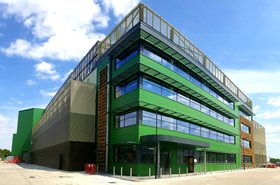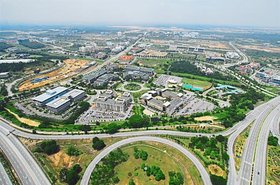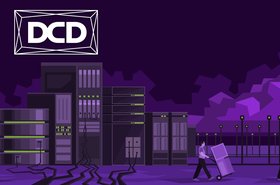The sudden explosion in home working wrought by coronavirus stay-at-home policies and lockdowns saw frantic customers try to reserve “double or triple” their capacity at data centers – up from the standard 10 percent of server-room row that had been typical before the virus struck.
That’s according to Bruno Berti, vice president of product management at NTT Global Data Centers, speaking on a panel at DCD’s Datacenter-as-a-service virtual event last week.
Doubling up
Berti was talking about the effect of the global pandemic on demand for data center services, with the lack of certainty pushing customers to reserve as much capacity as they could afford.
“At first, there was a bit of a wait-and-see [attitude] to see what was going to happen,” said Berti, “but it quickly turned into significantly increasing demand requirements.”
At the time, said Berti, NTT Global Data Centers had four active construction projects - including one in London - as the company was in a major growth phase and expanding in, and into, a number of different markets. “We were also expanding in a lot of our harder, hotter markets,” adds Berti, admitting that, initially, the construction projects were also adversely affected.
“Fortunately, because we build in a modular approach, we were able to deploy some modules so that we had inventory a lot sooner to provide some [extra] capacity in those markets where we saw the biggest demand kicking up from our existing customers,” said Berti.
However, at the beginning of the pandemic, both NTT and its customers didn’t really know how much capacity would be required due to the uncertainty.
“A lot of our customers, and even us, didn’t really know or understand how much capacity would really be required… there was a lot of concern that all available inventory in certain markets was being scooped up by the bigger players. [As a result] some of the smaller players were scrambling to try and get capacity.
“For us, the behavior change we saw was customers asking for ‘ramps’, and possibly reserving capacity that they weren’t willing to take initially. They wanted to… make sure that space or capacity was reserved for them if they needed it,” said Berti.
In the frenzy, many customers sought to reserve way more than they normally would in order to handle their own perceived unpredictability of demand.
“Typically, we’d see that for every, let’s say, megawatt of capacity customer might contract for 10 per more in reserve or in a row,” said Berti – a cautious acknowledgment of potential growth. “What we started to see was almost the opposite behavior; they would buy a certain amount of capacity, but asked for double or triple that as some sort of reserve or option, just so they could deal with the unpredictability of demand [that they were experiencing].
“They wanted to be prepared for demand from their clients when it comes, but not necessarily buy it ahead of time,” said Berti.
As a result, conversations with clients were more intensive than usual, both to re-assure customers that capacity would be there if and when they needed it, but also to ensure that everyone was dealt with fairly and that NTT. “It was an interesting give-and-take with our clients. How can we make sure that they had the capacity they needed to service their customers, [with] us having enough capacity in the market to be able to accommodate all of our customers and prospects,” added Berti.
Further reading
-

NTT Com’s new CEO moves fast, has big plans
Tetsuya Shoji reveals ambitious plans on his first visit to London as the head of the company
-

NTT opens London 1 data center in Dagenham
New facility with a potential capacity of 64MW, triples the operator's space in the UK
-

NTT to build fifth Malaysian data center, MIST submarine cable begins
Company wants a foothold in the region to benefit from its economic growth

